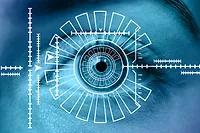DHS to Implement Facial Recognition Technology to Identify Travelers
According to the Department of Homeland Security's Fiscal Year 2018: Entry/Exit Overstay Report, they will be implementing facial recognition technology to identify approximately 97 percent of airport passengers departing the country.
In its report, the DHS says, "DHS is also implementing a biometric-based departure program to complement the biographic data collection that already exists. This program matches live photos of travelers to images gathered as part of previous border crossings in order to better confirm the traveler’s identity, as well as confirm exit crossings."
After the success of 2017 biometric programs, "CBP built a facial biometricmatching service using biographic Advance Passenger Information System (APIS) manifest data and existing photographs of travelers boarding international flights. The biometric matching service is a robust cloud-based service that leverages existing advance passenger information to create a pre-positioned “gallery” of face images from U.S. Government holdings. The galleries
are smaller, more manageable data sets that can be segregated based on APIS data for specific flights. The photographs can come from passport applications, visa applications, or interactions with CBP at a prior border encounter where CBP typically takes a photograph. The biometric matching service then compares a live photo of the traveler to the gallery of face images for that flight to identify the traveler and enable CBP to confirm the traveler’s crossing. On exit, the matching service identifies the traveler, creates an exit record, and enables CBP to biometrically confirm the departure of in-scope, non-U.S. citizens."
It also reported that at the end of the Fiscal Year 2018, biometric exit solutions were operational at 15 locations, servicing over two million passengers on over 15,000 flights have used the technology on exit, with an average biometric match rate of 98 percent.
The CBP has also implemented and expanded the use of the Biometric Exit Mobile (BE-Mobile) program at land borders nationwide. The report claims, "CBP deployed mobile technology to the land border POEs, which allowed CBP officers working outbound pulse and surge operations to process exiting travelers using the BE-Mobile application. The BE-Mobile application creates a biometrically confirmed exit record for a departing traveler." However, the use of biometric exit solutions in land environment are more difficult than air and sea environments due to physical, logistical, and operational obstacles involved with electronically collecting an individual’s biographic and biometric data.
The DHS report concludes by reaffirming that it will continue to develop, test and expand the entry and exit system during the Fiscal Year 2019, using biometric and biographic traveler data, improving CBP’s ability to capture and report data accurately as it is critical for national security.
Looking for a reprint of this article?
From high-res PDFs to custom plaques, order your copy today!







